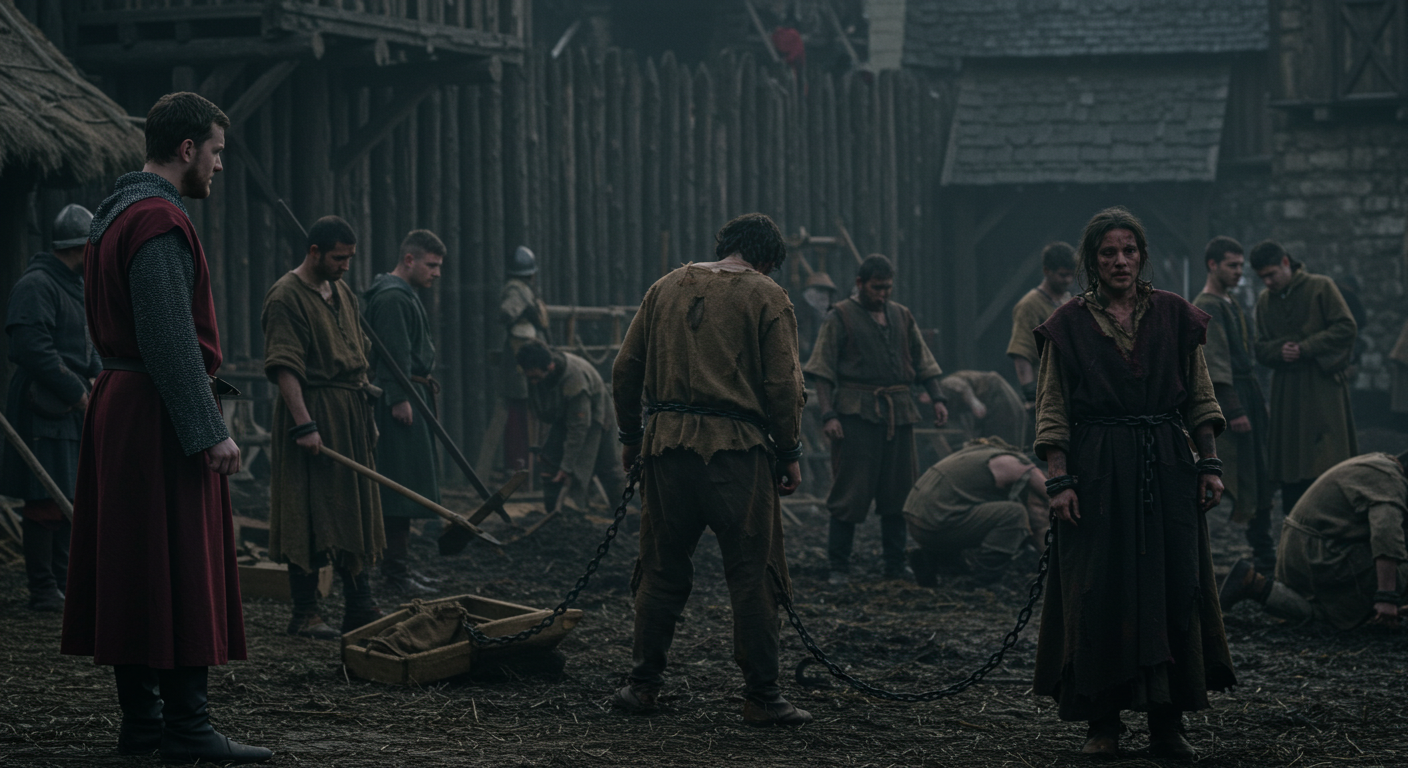Introduction to Slavery in the Middle Ages
During slavery in the middle ages, various forms of bondage emerged across medieval Europe. Though it differed from region to region, the core reality remained: people were forced into servitude through conquest, trade, or crushing debts, facing constant oppression and inequality. To this day, scholars debate how widespread it was and were there slaves in medieval times in all kingdoms or only specific locales. Yet evidence confirms that slavery in medieval Europe was a grim fact, involving coerced labor, strict social hierarchy, and the unrelenting fear of punishment.
Were Serfs Slaves?
One of the key questions is were serfs slaves, or did they merely occupy a lower tier in the feudal structure? The serf in the dark ages, often referred to as a serf in medieval times, was bound to the land and obligated to serve the local lord. Legally, they were not branded property, yet the lines between limited freedom and outright exploitation blurred. The daily hardship of serfs-plowing fields, herding livestock, and performing menial tasks-mirrored many conditions that a medieval slave might endure. While serfdom and slavery were not identical, both shared the yoke of feudalism and perpetual oppression.
Medieval Chains and Their Purposes
In many cases, medieval chains were used to reinforce submission among slaves, prisoners of war, and sometimes serfs guilty of wrongdoing. These iron restraints were symbols of captivity-visible reminders of subjugation. Lords and kings depended on these devices to maintain order, harnessing the skills of blacksmiths to create shackles, manacles, and heavy links. Once locked in chains, individuals faced few chances of escape, further highlighting the rigid hierarchy that placed them at the mercy of those in power.
Social and Economic Drivers
Societal structures in the Middle Ages often revolved around land, loyalty, and servitude. Victory in war could result in the capture of entire populations, sold and distributed as slaves to farm estates or labor in urban households. Poverty also contributed to bondage, as desperate families sold children or themselves. This contributed to the broader question of were there slaves in medieval times throughout Europe, including regions that nominally outlawed slavery but tolerated binding peasant contracts close to enslavement. Local legal codes sometimes offered limited protections, yet these rarely mitigated the stark inequality that kept the poorest locked in cycles of hardship.
Shifts in Attitude
Over time, changing economic circumstances and moral debates began to erode slaveholding practices. Some landowners recognized the potential for more profit when employing free peasants, rather than enslaved labor, spurring mild reforms. Religious movements and evolving philosophical views slowly reframed how individuals perceived human dignity, undercutting older justifications for exploitation. However, the transition was far from swift, and stories of the medieval slave often ended in sorrow.
Slavery, Serfdom, and Public Perception
Despite these nuanced shifts, the medieval populace viewed slavery and serfdom through a decidedly pragmatic lens. Those in power saw it as a necessary aspect of feudalism, upholding order in a society rife with conflicts. To peasants forced into servitude, it was a fate to be dreaded, and stories of cruel punishments-often made worse by the use of medieval chains-reinforced that fear. This ingrained acceptance of bondage shaped European societies well into the later Middle Ages, when increased trade, urbanization, and new ideologies gradually undermined the old systems.
Visiting Museums to Learn More
For modern audiences, exploring how slavery in medieval europe functioned offers a sobering glimpse into a world dominated by hierarchy and oppression. Institutions like the
Medieval Torture Museum in Chicago
help visitors grasp the severity of captivity and forced labor through detailed exhibits. Those seeking unique historical sites on the West Coast can visit the
Medieval Torture Museum in LA,
which pairs broad educational content with broader cultural tourism. Meanwhile, anyone interested in st augustine entertainment should consider the
Medieval Torture Museum in St Augustine,
one of the notable st. augustine points of interest offering deeper context on chains, dungeons, and the plight of the medieval slave. All three venues reveal a side of history often overshadowed by chivalric legends, challenging visitors to reflect on how power structures shaped lives in the past.
To delve further, check the museum’s regularly updated
blog
for scholarly articles, behind-the-scenes looks, and curated narratives on slavery in the middle ages. Learning about a serf in the dark ages or an enslaved captive in feudal Europe underscores the brutal extremes of exploitation that forged medieval societies, and serves as a reminder of the importance of safeguarding personal freedoms today.
The existence of slavery in medieval Europe, the harsh conditions of serf medieval times, and the omnipresence of medieval chains all paint a sobering picture of an era when bondage shaped the fates of many. People trapped at the bottom of the hierarchy faced a life of ceaseless labor, minimal rights, and the looming threat of punishment. Whether we classify them as serfs or outright slaves, their experiences converge in a narrative of servitude, hardship, and ongoing oppression. Examining these histories grants a clearer understanding of how deeply entrenched systemic inequality was-and reminds us that the echoes of such injustices can still resonate, unless we remain vigilant about defending human dignity and liberty in every age.






